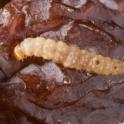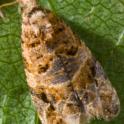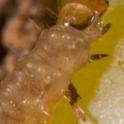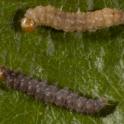Winter 2011: European grapevine moth: a new major pest on grapes, now in Central California, with potential impact on the ornamental nursery industry
Regional Report for Santa Cruz and Monterey Counties by Steve Tjosvold
In mid-September, Santa Clara County was added to the eight other California counties where European grapevine moths (EGVM) have been trapped and quarantines established. One moth was also found in Santa Cruz County, and intensified trapping currently underway will determine if a quarantine will be triggered there. The question now arises: what will the impact on the ornamental industry be?
The pest, Lobesia botrana, was first detected in the United States in the Napa Valley in October 2009. It is a serious pest of grape where it is found in Southern Europe, North Africa, Anatolia, the Caucasus and Chile. Larvae emerge early in the spring and feed on grape bud clusters or flowers and spin webbing around them. They pupate inside the web or under a rolled leaf. If heavy flower damage occurs during this first generation, the affected flowers will fail to develop and yield will be reduced. Second-generation larvae enter the grapes to feed before they pupate inside the grape. Larvae of the third generation — the most damaging — feed on multiple ripening grapes and expose them to further damage from fungal development and rot.
This pest feeds on many different plant families (approximately 27) but only a few species within each family may be suitable for development. Much of the knowledge on other hosts is from research and observation in Europe. For example, in Italy, olive trees offer satisfactory food for the larvae and could be a source of emerging and migrating moths that infest adjacent vineyards. A partial list of known hosts is listed below but little to no information is available in the scientific literature on the damage to these crops or how sufficient they are for insect development. This is the same list of hosts that are now regulated under federal and state quarantines (Table 1).
Table 1. Known hosts for the European grapevine moth
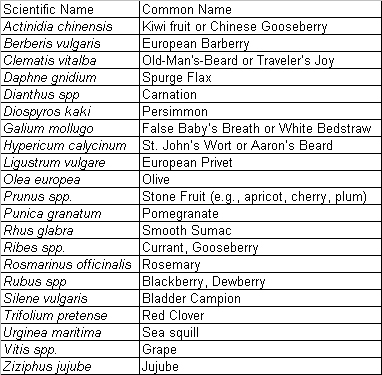
Although EGVM may not be a particularly damaging pest on ornamentals, it is feared that ornamentals may harbor the pest and move it with shipments on infested hosts. Federal and state quarantines stipulate that nurseries growing regulated hosts within regulated areas must enter into a compliance agreement with authorities to ship those hosts outside of the quarantined area. Compliance agreements will stipulate specific measures to safeguard against the spread of any life stages of EGVM. The agreements are not unlike those that are currently in effect for Light Brown Apple Moth (LBAM). Both moths are in the same moth family (Tortricidae: leafrollers) and some of the same exclusion and management strategies are being implemented. Given the capability of this pest to feed on many hosts, it may extend its number of host species if given the opportunity.
Since it is not clear how important nursery hosts are to the movement of EGVM, for now regulatory authorities are emphasizing the control of the most obvious path of movement— on grape plants and fruit. Compliance agreements are mandated for production and retail nurseries within the quarantined areas to ship within and out of quarantined areas. Production nurseries are required to be inspected before the first shipment and thereafter every 30 days. An integrated pest management program targeting EGVM must be established and treatment records maintained. More intensive management is necessary for grape and olive stock. For example, olive fruit and flowers would need to be removed, or chemically inhibited, or treated with an approved insecticide before shipment. More information on identification, management and regulation is available at these links:
UC IPM: http://www.ipm.ucdavis.edu/EXOTIC/eurograpevinemoth.html
USDA APHIS: http://www.aphis.usda.gov/plant_health/plant_pest_info/eg_moth/index.shtml
CDFA: http://www.cdfa.ca.gov/phpps/egvm/index.html
Click on thumbnail to view entire figure.
Larvae of European grapevine moth, Lobesia botrana, have prominent white spots at the base of body hairs. (Photo by Jack Kelly Clark)
Adult European grapevine moth, Lobesia botrana. (Photo by Jack Kelly Clark)
The EGVM larva has dark markings on the outside, back edge of the prothoracic shield and dark thoracic legs. (Photo by Jack Kelly Clark)
Earlier stages of European grapevine moth larvae, Lobesia botrana, are tan to yellow-brown (top). Later stages become dark colored (bottom). (Photo by Jack Kelly Clark)








